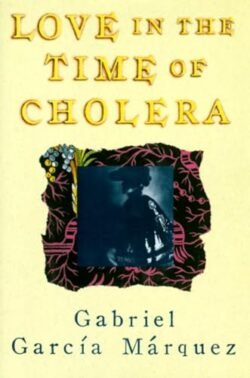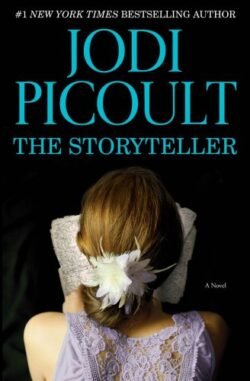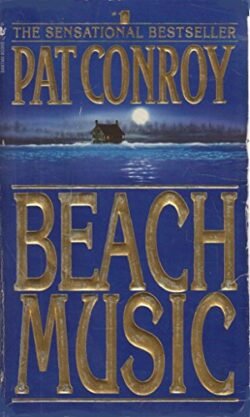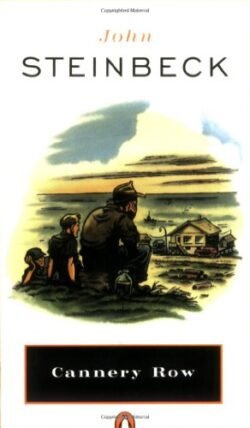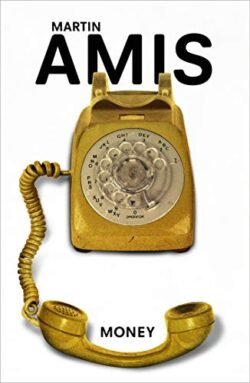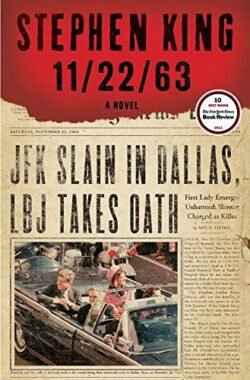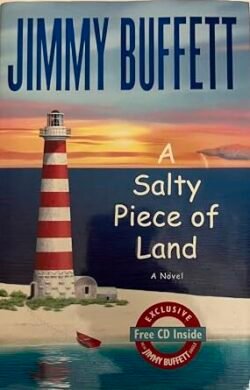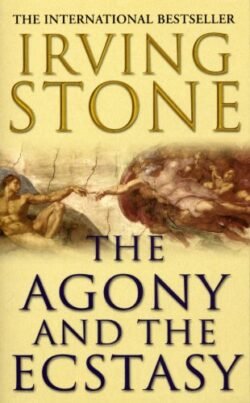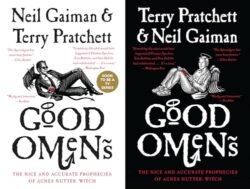“Love in the Time of Cholera” by Gabriel García Márquez, first published in 1985, is a masterpiece of magical realism that explores themes of love, desire, and aging over a span of fifty years. Set in an unnamed Caribbean seaport city, the novel tells the story of the long, unrequited love between Florentino Ariza and Fermina Daza. Florentino falls deeply in love with Fermina in their youth, but she eventually marries a wealthy doctor, Juvenal Urbino, instead. The novel follows their lives through the decades, detailing Florentino’s numerous romantic encounters and his unwavering devotion to Fermina, culminating in their reunion in old age after Urbino’s death. Themes and Analysis Florentino Ariza: Florentino Ariza is characterized by his romantic idealism and obsessive love for Fermina Daza. Despite being rejected, he vows to remain faithful to her, engaging in various affairs yet holding onto the promise of his youthful love. His life is marked by his poetic view of love and his determination to wait for the chance to be with Fermina again. Fermina Daza: Fermina Daza is initially drawn to Florentino’s passionate advances but ultimately chooses stability and social status in her marriage to Juvenal Urbino. Her character is strong-willed and practical, yet as she ages, she reflects on her choices and the meaning of love and companionship. Juvenal Urbino: Dr. Juvenal Urbino, Fermina’s husband, is a symbol of modernity and progress in the city. His marriage to Fermina is characterized by mutual respect and affection, but it lacks the passionate intensity of Florentino’s love. Urbino’s death sets the stage for the novel’s conclusion and the possibility of a second chance for Florentino and Fermina. Themes and Analysis The Nature of Love: The novel presents a complex exploration of love’s many forms, from youthful passion to marital companionship, and questions the nature of true love and fidelity. Time and Memory: García Márquez examines how time affects characters’ perceptions and emotions, exploring themes of memory, aging, and the inevitability of death. Social Class and Progress: The backdrop of the changing seaport city reflects the tensions between tradition and modernity, and the impact of social class on characters’ lives and relationships. “Love in the Time of Cholera” is a poignant meditation on the enduring power of love, masterfully blending the real with the magical. Gabriel García Márquez’s lyrical prose and richly drawn characters create a vivid tapestry of life’s complexities, making it a landmark novel in world literature. The book’s exploration of love’s many facets, coupled with its deep humanity and understanding of the human heart, continues to resonate with readers around the world, cementing its status as a timeless classic. If the summary caught your interest, Consider reading the full book on AbeBooks. Explore this book on AbeBooks
The Storyteller
“The Storyteller” by Jodi Picoult, published in 2013, is a compelling novel that delves deep into the themes of morality, forgiveness, and the enduring impact of the past on the present. The narrative centers around Sage Singer, a young woman who befriends an elderly man named Josef Weber in her grief support group. Their unlikely friendship takes a dark turn when Josef confesses to being a former SS officer at Auschwitz, seeking Sage’s forgiveness for his past atrocities. Sage, whose grandmother Minka is a Holocaust survivor, finds herself torn between the desire for justice and the complex nature of forgiveness. The novel weaves together multiple perspectives, including Sage’s, Josef’s, and Minka’s, who shares her harrowing tale of survival through the Holocaust. Minka’s story within the story, a fictional account of a Polish girl’s experience in the ghettos and concentration camps, adds a profound layer of historical depth and emotional resonance to the narrative. Character Analysis Sage Singer: Sage is a baker who prefers the solitude of night, where she can hide her scarred face and the guilt she carries for her mother’s death. Her character embodies themes of self-imposed isolation and the struggle with self-forgiveness. Sage’s journey through the novel is one of moral reckoning and personal transformation as she confronts Josef’s request and her grandmother’s past. Josef Weber: Josef is introduced as a beloved, elderly community member with a horrifying secret. His character challenges readers to grapple with the question of whether someone who has committed unspeakable evils can ever truly atone for their actions. Josef’s presence in the novel provokes a deep examination of guilt, remorse, and the possibility of redemption. Minka Minka’s: story provides a direct link to the Holocaust, serving as a testament to the resilience of the human spirit in the face of unimaginable horror. Through Minka, the novel explores themes of survival, the power of storytelling, and the ways in which personal history shapes one’s identity. Themes and Analysis The Complexity of Forgiveness: The novel poses challenging questions about the limits of forgiveness and its role in the healing process, both for individuals and communities. Memory and Storytelling: “The Storyteller” highlights the importance of memory and storytelling in preserving history, conveying truths about the human condition, and seeking justice. The Moral Ambiguity of Justice: Picoult explores the moral ambiguity surrounding justice, especially in cases of historical atrocities, and the responsibilities of subsequent generations to remember and respond to the past. “The Storyteller” by Jodi Picoult is a thought-provoking exploration of the darkest chapters of human history, the enduring quest for justice, and the deeply personal journey toward understanding and forgiveness. Through its multifaceted characters and interwoven narratives, the novel captures the complexity of confronting the past and the moral dilemmas that arise when seeking to reconcile the irreconcilable. Picoult masterfully crafts a story that is as unsettling as it is moving, compelling readers to reflect on the nature of evil, the capacity for change, and the power of forgiveness. If the summary caught your interest, Consider reading the full book on AbeBooks. Explore this book on AbeBooks
Beach Music
“Beach Music” by Pat Conroy, published in 1995, is a sprawling novel that delves into themes of family, loss, and redemption. Set against the backdrop of the South Carolina lowcountry and the historic vistas of Rome, the story follows Jack McCall, an American expatriate living in Italy with his young daughter after the tragic suicide of his wife. Jack’s self-imposed exile is interrupted when he is called back to South Carolina by his mother’s impending death. The return to his homeland forces Jack to confront his tumultuous past, including a fractured family, the shadow of the Vietnam War, and the deep wounds left by his wife’s death. As Jack navigates his complex family dynamics and the secrets that emerge, “Beach Music” weaves a rich tapestry of characters and stories that span continents and generations. Character Analysis Jack McCall: Jack McCall is the protagonist, a deeply wounded man who has fled his past and the pain associated with his home. His journey back to South Carolina and the subsequent reconciliation with his family and friends serve as the central narrative arc, exploring themes of forgiveness, understanding, and healing. Jack’s character is marked by his resilience in the face of tragedy and his capacity for love and forgiveness. Themes and Analysis The Complexity of Family: “Beach Music” explores the intricate web of relationships within the McCall family, highlighting the challenges and beauty of familial bonds. Conroy examines the ways in which families can be both a source of deep pain and profound healing. The Impact of History and War: The novel addresses the lingering effects of the Vietnam War on its veterans and their families, as well as the Holocaust’s legacy through the character of Leah, whose family history unfolds in the narrative. Grief and Redemption: At its heart, the story is about dealing with grief, finding redemption, and the possibility of starting anew. Conroy portrays the characters’ struggles with loss and their paths toward healing with empathy and depth. “Beach Music” by Pat Conroy is a masterful exploration of the human condition, set against the richly described landscapes of South Carolina and Rome. Conroy’s lyrical prose and deep emotional insight into his characters make the novel a poignant and compelling read. The book’s examination of the complexities of life, family, and history captures the essence of the American South and the universal quest for meaning and reconciliation. “Beach Music” remains a beloved work in Conroy’s oeuvre, celebrated for its storytelling, character development, and the evocative beauty of its settings. If the summary caught your interest, Consider reading the full book on AbeBooks. Explore this book on AbeBooks
Cannery Row
“Cannery Row” by John Steinbeck, first published in 1945, is a novel set in the Monterey Bay area of California during the Great Depression. This classic piece of American literature is known for its rich depiction of life in a small cannery district, focusing on the lives of its inhabitants who are considered outcasts by mainstream society. The narrative centers around a group of characters who live on the fringes of society, including Doc, a marine biologist; Mack and the boys, a group of good-natured bums living in a warehouse; and Dora Flood, the owner of a local brothel. Steinbeck’s novel is a mosaic of interconnected stories, mixing humor and sadness, to paint a picture of a community bound by its shared humanity and struggles. Character Analysis Doc: Doc is portrayed as the moral center and most respected member of the Cannery Row community. A kind-hearted and introspective marine biologist, he is a friend to all and acts as a stabilizing force within the community. His laboratory is a hub of activity and a sanctuary for the various characters who seek his advice and companionship. Mack and the Boys: Mack and his group of friends, known as “the boys,” are central to the novel’s exploration of friendship and loyalty. Despite their lack of ambition and penchant for getting into trouble, they are depicted with affection and humanity by Steinbeck. Their attempts to do good, most notably their efforts to throw a party for Doc, often result in comical mishaps but underscore their underlying good intentions. Dora Flood: Dora Flood runs the Bear Flag Restaurant, a brothel that serves as another focal point of community life on Cannery Row. She is depicted as a strong, compassionate woman who looks after her girls and contributes to the community, showing generosity in times of need. Themes and Analysis Community and Isolation: “Cannery Row” explores the dynamics of community life, highlighting how individuals come together to form a cohesive group despite their personal struggles and societal isolation. Humanity and Compassion: The novel emphasizes the intrinsic worth of every individual, advocating for compassion and understanding toward those who live on the margins of society. Nature and Science: Through Doc’s character and work, Steinbeck weaves in themes of nature and science, celebrating the beauty and complexity of the natural world. “Cannery Row” is a testament to John Steinbeck’s profound skill in capturing the essence of human life and the enduring spirit of a community. With its rich ensemble of characters and vivid setting, the novel offers a timeless reflection on the complexities of life, the importance of relationships, and the capacity for kindness and resilience in the face of hardship. Steinbeck’s affectionate portrayal of Cannery Row and its inhabitants celebrates the beauty found in the simplicity of everyday life, making it a beloved classic in American literature. If the summary caught your interest, Consider reading the full book on AbeBooks. Explore this book on AbeBooks
Money
“Money: A Suicide Note” by Martin Amis is a seminal work of British literature, first published in 1984. Part of the postmodern literary movement, the novel is known for its dark humor, complex narrative structure, and incisive critique of consumer culture. The story is narrated by John Self, a hedonistic and self-destructive director of TV commercials who embarks on an increasingly chaotic journey through London and New York. As Self indulges in a lifestyle of excess, financed by his seemingly limitless credit, his life begins to spiral out of control, mirroring the moral and spiritual bankruptcy of the society around him. Amis’s “Money” is both a character study of a man consumed by his desires and a societal critique, offering a scathing commentary on the corrosive effects of capitalism and consumerism. Character Analysis John Self John Self, the protagonist, is emblematic of the excesses of the 1980s, embodying the greed, lust, and gluttony that Amis critiques. Despite his financial success, Self is deeply unhappy, struggling with issues of identity, self-worth, and the meaning of life. His journey is one of self-discovery, albeit through a lens of self-destruction, making him a compelling if not always sympathetic character. Self’s interactions with a cast of eccentric characters, including his girlfriend Selina Street, his manipulative American producer Fielding Goodney, and various other caricatures of the era, reveal the hollowness and absurdity of the world he inhabits. Themes and Analysis Consumerism and Its Discontents: The novel explores the vacuous nature of consumer culture, depicting a world where material wealth is equated with happiness, leading to moral and existential emptiness. Identity and Self-Destruction: Through John Self’s character, Amis examines themes of identity in a postmodern world, where the self is fragmented and authenticity is lost amid the pursuit of pleasure and wealth. Satire of the 1980s: “Money” is a biting satire of the 1980s, capturing the decade’s spirit of excess, the rise of neoliberal economics, and the cultural obsession with wealth and celebrity. “Money: A Suicide Note” is considered one of Martin Amis’s masterpieces, praised for its wit, linguistic inventiveness, and sharp social commentary. The novel stands as a powerful critique of the era it depicts, offering a bleak yet humorous look at the consequences of unchecked consumerism and the search for meaning in a materialistic society. Through the tragicomic figure of John Self, Amis crafts a narrative that is both a personal odyssey and a broader cultural critique, making “Money” a landmark work in contemporary literature. If the summary caught your interest, Consider reading the full book on AbeBooks. Explore this book on AbeBooks
11/22/63
“11/22/63” by Stephen King is a thrilling and thought-provoking novel that combines elements of historical fiction, science fiction, and romance. The story follows Jake Epping, a high school English teacher from Lisbon Falls, Maine, who discovers a time portal in a local diner’s storeroom that leads to September 9, 1958. Encouraged by the diner’s owner, Al, Jake embarks on an ambitious mission to prevent the assassination of President John F. Kennedy, believing that changing this single event could improve the world. As Jake travels back in time, he finds himself entangled in the complexities of the past, falls in love, and faces the profound moral and ethical dilemmas posed by time travel. King masterfully weaves historical details into the narrative, exploring the impact of altering history and the intricate web of consequences that follow. Character Analysis Jake Epping Jake Epping is portrayed as an ordinary man who is given an extraordinary task. His character is deeply developed through his journey into the past, where he not only seeks to change history but also grapples with the personal connections he forms in the 1950s and 1960s. Jake’s struggle with the weight of his mission and the implications of his actions on the timeline are central to the novel’s exploration of fate, free will, and the nature of love. Themes and Analysis The Consequences of Changing History: The novel delves into the ethical considerations and unforeseen consequences of altering historical events, posing questions about destiny and the role of individuals in shaping the future. Love Across Time: Jake’s romance with Sadie Dunhill, a librarian in Jodie, Texas, adds a poignant layer to the story, highlighting the timeless and transformative power of love. The Complexity of Time Travel: King explores the mechanics and paradoxes of time travel, presenting it as a double-edged sword that offers the possibility of change but at great risk and with complex moral implications. “11/22/63” is a captivating blend of genres that showcases Stephen King’s versatility as a writer. Through the lens of time travel, King offers a unique perspective on one of the most significant events in American history, wrapped in a story of love, loss, and the human condition. The novel is a compelling examination of the past’s grip on the present and the intricate dance between fate and free will. With its rich character development, meticulous attention to historical detail, and profound thematic depth, “11/22/63” stands as a testament to King’s storytelling prowess, offering readers a deeply immersive and unforgettable experience. If the summary caught your interest, Consider reading the full book on AbeBooks. Explore this book on AbeBooks
A Salty Piece of Land
“A Salty Piece of Land” by Jimmy Buffett is a novel that embodies the spirit of adventure, set against the backdrop of the Caribbean’s crystal-clear waters and tropical landscapes. The story follows Tully Mars, a Wyoming cowboy who, feeling constrained by life on the ranch, sets off on a journey to find freedom and escape. His quest leads him to a variety of colorful locations and characters, including lost islands, quirky bars, and the mythical lighthouse of Cayo Loco. Along the way, Tully discovers not just the beauty of the Caribbean but also profound insights into life, love, and the pursuit of happiness. Buffett’s narrative is infused with his trademark humor and laid-back attitude, making “A Salty Piece of Land” a celebration of the joys of escapism and the discovery of one’s true self. Character Analysis Tully Mars: Tully Mars is the protagonist whose journey from a Wyoming ranch to the idyllic beaches of the Caribbean serves as the central narrative of the novel. His character is marked by a deep yearning for freedom and a sense of adventure. Tully’s development throughout the story reflects his experiences with new cultures, challenges, and friendships, which ultimately lead him to a deeper understanding of what it means to live fully. Themes and Analysis Escape and Adventure: The novel explores the theme of escape from the mundane aspects of daily life, championing adventure and the exploration of new horizons as pathways to self-discovery. Connection to Nature: Tully’s journey is deeply connected to the natural world, highlighting the therapeutic and transformative power of the sea and tropical landscapes. Search for Meaning: Through its cast of characters and Tully’s adventures, “A Salty Piece of Land” delves into the search for meaning and fulfillment in life, suggesting that it’s the journey, rather than the destination, that matters most. “A Salty Piece of Land” by Jimmy Buffett is a vibrant and heartwarming tale of adventure, self-discovery, and the pursuit of happiness. Buffett’s storytelling transports readers to a world where the worries of everyday life melt away in the warm Caribbean sun, offering a delightful escape and a reminder of the beauty of pursuing one’s dreams. With its rich descriptions of tropical paradises and the captivating journey of its protagonist, the novel is a testament to the enduring appeal of adventure and the limitless possibilities that life offers. If the summary caught your interest, Consider reading the full book on AbeBooks. Explore this book on AbeBooks
Erasure
“Erasure” by Percival Everett is a satirical novel that delves into themes of identity, authenticity, and the complexities of race within the literary world. The story centers on Thelonious “Monk” Ellison, an African American author frustrated by the publishing industry’s expectations and stereotypes about what constitutes “authentic” Black writing. In response to the industry’s demand for stereotypical narratives, Monk writes a parody under a pseudonym, which becomes an unexpected hit. The novel explores the consequences of this success, both for Monk and for the broader discussion about race, representation, and the commodification of culture. Character Analysis Thelonious “Monk” Ellison: Monk, the protagonist, is a highly educated and erudite author and professor who struggles with the literary world’s pigeonholing of African American literature. His character is a study in contradictions: while he deeply values authenticity and despises reductionist portrayals of Black life, his own creation, meant as satire, is celebrated for the very stereotypes he aims to criticize. Monk’s journey is one of self-discovery, artistic integrity, and a critique of societal and cultural expectations. Themes and Analysis Cultural Stereotypes and Authenticity: Everett’s novel critiques the publishing industry’s and society’s insistence on defining “authentic” Black experiences in narrow, often stereotypical terms, challenging readers to question who gets to define authenticity. The Role of Satire: “Erasure” itself serves as a satirical mirror to the real world, using Monk’s story to highlight the absurdity and danger of simplifying complex identities to fit market demands. Identity and Self-Expression: Through Monk’s internal conflict and his interactions with the literary world, the novel examines the tension between personal identity and the external pressures to conform to societal expectations. “Erasure” by Percival Everett is a thought-provoking and incisive critique of the literary establishment and its handling of race and identity. Through the lens of satire, Everett skillfully addresses serious issues of stereotyping, cultural commodification, and the struggle for genuine representation. Monk Ellison’s character offers a compelling exploration of these themes, making “Erasure” a significant contribution to discussions about diversity in literature and the arts. Everett’s novel is a powerful reminder of the importance of challenging and transcending reductive labels in pursuit of authentic self-expression and understanding. If the summary caught your interest, Consider reading the full book on AbeBooks. Explore this book on AbeBooks
The Agony and the Ecstasy
“The Agony and the Ecstasy” by Irving Stone is a compelling biographical novel that chronicles the life of the Renaissance artist Michelangelo Buonarroti. Set against the backdrop of 15th and 16th century Italy, the book offers a vivid portrayal of Michelangelo’s tumultuous journey as he becomes one of the most revered artists in history. Through meticulous research and rich narrative detail, Stone explores Michelangelo’s artistic process, his struggles with patrons and political figures, and his personal life. The novel delves into the creation of some of Michelangelo’s most iconic works, including the statues of David and the Pietà, and the painting of the Sistine Chapel ceiling, providing insight into the passion, conflict, and genius that defined his life. Character Analysis Michelangelo Buonarroti: Michelangelo is portrayed as a man of intense passion, singularly devoted to his art. His relentless pursuit of perfection and his uncompromising vision often put him at odds with his patrons, including popes and political leaders. Stone’s Michelangelo is a complex character—a genius driven by an insatiable desire to create, yet plagued by self-doubt and personal turmoil. His dedication to his work and his ability to overcome adversity underscore his extraordinary talent and resilience. Themes and Analysis The Creative Process: The novel offers an in-depth exploration of the artistic process, highlighting the challenges and triumphs Michelangelo faces as he brings his visions to life. Art and Power: Stone examines the relationship between art and power, depicting how Michelangelo’s work is influenced by the political and religious dynamics of his time. The Human Spirit: At its core, “The Agony and the Ecstasy” is a testament to the strength of the human spirit, showcasing how Michelangelo’s dedication to his craft transcends personal and professional obstacles. “The Agony and the Ecstasy” is not just a novel about an artist; it is a powerful narrative that captures the essence of creativity, ambition, and the enduring impact of Michelangelo’s work on the world. Irving Stone masterfully brings to life the story of a man whose legacy is immortalized in marble and fresco, inviting readers to experience the passion and pain behind some of the most magnificent art ever created. This meticulously researched and beautifully written book offers a window into the Renaissance and the life of one of its greatest artists, making it a must-read for lovers of history, art, and exceptional storytelling. If the summary caught your interest, Consider reading the full book on AbeBooks. Explore this book on AbeBooks
Good Omens
“Good Omens” by Neil Gaiman and Terry Pratchett is a comedic yet profound novel about the apocalypse. The story centers on an angel, Aziraphale, and a demon, Crowley, who have grown quite fond of Earth and its inhabitants after spending thousands of years among them. With the arrival of the Antichrist and the impending end of the world, they join forces in an unlikely alliance to prevent Armageddon. Along the way, they encounter a diverse cast of characters, including witch hunters, modern-day witches, and the Four Horsemen of the Apocalypse, each playing a role in the lead-up to the final battle between Heaven and Hell. “Good Omens” combines wit, satire, and deep insights into human nature, exploring themes of good versus evil, fate versus free will, and the complex nature of humanity. Character Analysis Aziraphale: Aziraphale, an angel who doubles as a rare book dealer, is characterized by his love for humanity’s cultural achievements and a somewhat fussy righteousness. His deep friendship with Crowley is built on centuries of shared experiences, and despite their opposing natures, he is determined to save the world from destruction. Crowley: Crowley, a demon with a penchant for fast cars and a somewhat relaxed attitude towards evil, is not as bad as he’s supposed to be. His affection for Earth and its pleasures makes him question the necessity of the apocalypse. His innovative thinking and deep bond with Aziraphale drive much of the novel’s plot. Themes and Analysis The Nature of Good and Evil: The novel playfully explores the gray areas between good and evil, suggesting that individuals are capable of both, regardless of their celestial or infernal origins. Fate vs. Free Will: “Good Omens” questions the notion of predetermined fate, emphasizing the importance of free will and the ability of individuals to influence the future. Humanity’s Complexity: Through its diverse cast of characters, the novel celebrates the complexities and idiosyncrasies of human life, highlighting both the virtues and vices that define humanity. “Good Omens” is a masterful blend of humor, fantasy, and insightful commentary on the human condition. Neil Gaiman and Terry Pratchett have created a world where the line between good and evil is blurred, and the impending apocalypse serves as a backdrop to examine deeper philosophical questions. The novel’s enduring appeal lies in its clever subversion of biblical and apocalyptic tropes, memorable characters, and the ultimate message that humanity, for all its flaws, is worth saving. As a satirical take on the end of the world, “Good Omens” offers readers laughter, suspense, and a heartfelt examination of what it means to be human. If the summary caught your interest, Consider reading the full book on AbeBooks. Explore this book on AbeBooks

